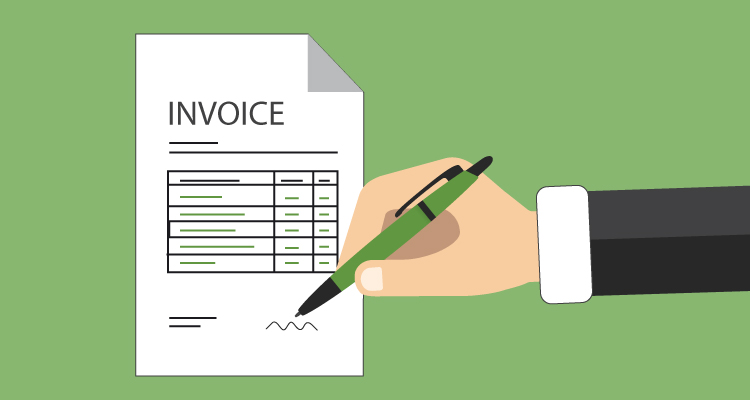For a business to run smoothly and properly all the time, there are a few things that need to be taken care of. Among factors such as having an A-team, creative and strong marketing plan, timely deliverables, there is one more factor related to finance and accounting that ensures a good prospect for a newly established business.
This factor is about implementing effective financial strategies and practices. If you have ventured into a new business, either small or big if you maintain a proper plan to keep a record of your budget and finances, consider your business to be already on the path of success. An effective financial strategy includes transparency and consistency as its two major components.
One of the key factors in maintaining a transparent accounting process is having a properly managed invoice system. A good invoicing system helps in maintaining budgeting of the business without much of the hard work. It ensures that all product-related data is recorded and makes it possible for the business dealers to have easy access to all the information everywhere and at any time.
What is an Invoice?
For those of you who are not aware of what exactly an invoice is, we have got you covered. An invoice is essentially a document consisting of the details of the purchase made by a customer and its terms. The details about the purchase include everything from the product name to how much a buyer has to pay for it.
The invoice takes two perspectives depending upon who is viewing it. For the seller, it takes the role of a sales invoice as it tells every single detail regarding the sale of the good or service to the seller. For a buyer, an invoice becomes a purchase invoice as it gives information about how much the product costs.
Typically an invoices document is sent to the buyer along with the product in the form of paper but nowadays it has also acquired a form of electronic presence. E-invoice is composed in different electronic formats and is instantly sent online, eliminating the need to get the invoices printed on papers, a process that takes a considerable amount of time and thus results in delayed processing. You can further digitize this process by using a powerful AP automation solution like GetYooz. It will automatically analyze all the E-invoices and extract the pertinent information, after which workflows will automate the payment process. This way you don’t have to touch anything.
What does an invoice include?
Typically, an invoice is made of multiple elements that play a key role in the overall budget management of a business. The first basic thing an invoice includes is a date on which it is created. The date is maybe one of the most essential features as it tells exactly when the payment became due on the customer. And, in the case of a time limit based on certain payment terms, it helps both the buyer and seller to track the time limit of the payment.
The second thing an invoice includes is a name and address. In the case of a paper-based invoice, a physical address is required, whereas there is no need for a physical address in the electronic invoice, in such case an email address is enough.
The third and the most important feature of the invoice is the details of the product or service that has been purchased. The description of the purchased item usually includes clear and specific information so that there would not be any confusion later when the buyer receives the product. Then there comes the clear mention of the quantity of the product that a buyer has chosen and price per unit.
The invoice also includes payment details that tell the payment method, either paid through card or cash on delivery, late payment penalties, and discount on early payment. Then there is a super important part of the entire invoicing system, the total amount that has been charged and due balance, which shows zero in the case of making an online payment.
The other essentials that have to appear on an invoice are details about the seller, such as the name of the business and contact details. There is also a unique invoice number that is assigned to the seller for the reference.
What are different types of an invoice that you can use for your business?
Depending upon the situation, there are different types of invoices that are used in small businesses. Let’s dig deeper and get to know what the basic invoice types are so you know exactly what to include in your business’s invoicing system to make your accounting budgeting more smooth and easy.
Pro forma Invoice
It is a type of invoice that is typically used as a preliminary invoice, having all the necessary details about the product or service that are usually required in shipment. The details are ordinarily about the weight and transportation charges. This invoice acts as a draft invoice in which it lets the customer know what their desired product will be and what will it cost.
This invoice does not signal a final deal nor does it bind a customer in a legal contract of purchasing with the buyer, instead it simply makes the customer aware of the product. It is sent to the customer before the product is delivered.
Interim Invoice
You can think of it as an invoice that is issued whenever you received a payment in the form of installments for a bigger amount. It basically splits the total amount of a big project that may go on for several months, and demands installments from your clients each month instead of demanding the full amount on completion of the project.
This type of invoice keeps steady cash flow and makes sure that you never run out of funds for the project completion.
Final invoice
This is the most common invoice found in almost every business. It is basically a demand for payment when the product is delivered to the customer or the project has been completed. It binds the customer legally to pay you the full amount on time.
If you are looking for a free business invoice template then read the reviews on Digital Lessons in 90 Seconds.






